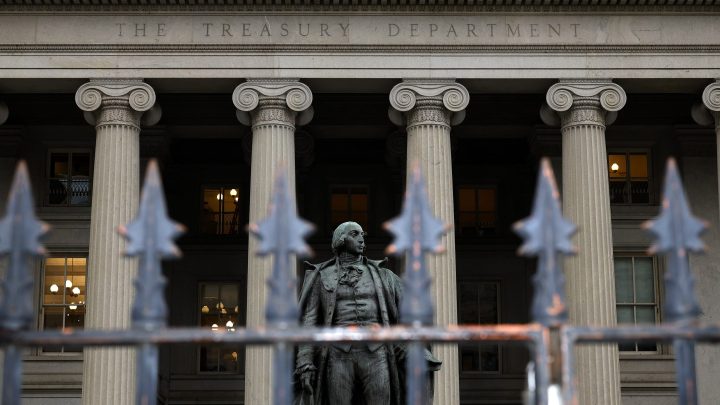
Climbing 10-year Treasury yield signals costlier future for buying, borrowing
Climbing 10-year Treasury yield signals costlier future for buying, borrowing

The yield on the 10-year Treasury note, essentially an IOU issued by the U.S. government, has been rising and rising this month. On Thursday, it hit levels not seen since 2007. Thing is, the bond market is usually a window into visions of the economy’s future.
The important thing to think about is that a 10-year note matures in 10 years, and the rate of annual interest payments during that time, known as the yield, is meant to account for what the economy’s gonna be like during that time. Recently, the vision of that future has changed. For starters, look at interest rates.
“Rates are gonna remain higher for longer,” said Luis Alvarado with the Wells Fargo Investment Institute. “A lot of the macroeconomic data we’ve been getting pretty much over the summer continues to reinforce the idea [that] the economy is still resilient, we’re not really expecting an economic slowdown soon and that the Fed’s job is still not done.”
If an economic slowdown isn’t coming soon, the Federal Reserve won’t be pressured to lower rates soon. If the Fed’s job of fighting inflation isn’t done, the central bank will have to keep rates high until it is. So if interest rates are higher for longer, 10-year yields will have to compete. That’s one reason they’re high.
Another reason? “Just the large amount of debt the Treasury is going to have to issue,” said Marvin Loh with State Street Global Markets.
The government has spent a lot of money and the Treasury Department is issuing a lot of bonds to pay for it, at a faster pace than expected. “The market seems to be having a little trouble digesting that,” Loh said.
One way to get investors to buy more bonds is to increase the payoff; that’s another reason yields are high. Finally, 10-year yields amount to a forecast of inflation over 10 years. The Fed wants annual inflation to hover around 2%, but the long-term outlook is murky.
“It may be much more uneven to get there, and it may be more volatile than what investors were originally expecting,” said BlackRock’s Steve Laipply.
Investors are realizing that long-term supply chain changes might raise costs, food prices could go up, OPEC might get friskier, the Fed might have more inflation fights in its future. So, with all that risk, we get another reason yields are high.
Bottom line: The future is looking like a more expensive place to buy things and borrow money, and bonds gotta keep up.
There’s a lot happening in the world. Through it all, Marketplace is here for you.
You rely on Marketplace to break down the world’s events and tell you how it affects you in a fact-based, approachable way. We rely on your financial support to keep making that possible.
Your donation today powers the independent journalism that you rely on. For just $5/month, you can help sustain Marketplace so we can keep reporting on the things that matter to you.

















